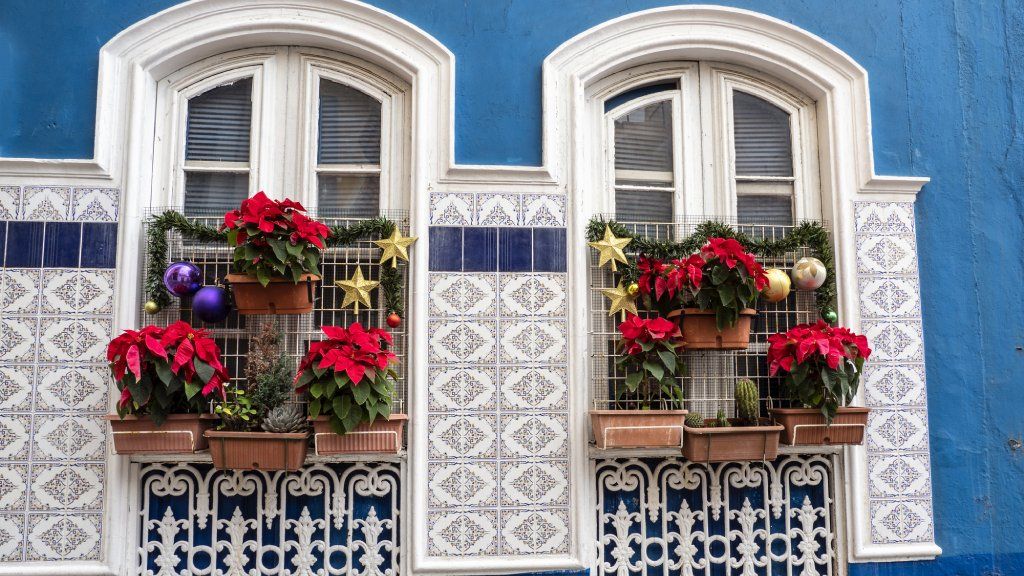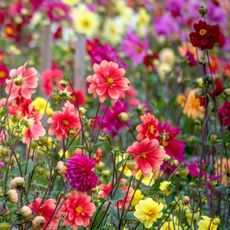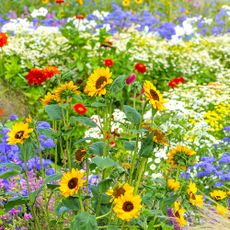Festive Holiday Plants & Traditions From Around The World
Holiday plants differ among countries, cultures, and traditions during this special season of festivities and giving.


Holiday plants are used to decorate homes and celebrate the season. Many of the most typical Christmas plants have deep roots in traditions. Cultures around the world that celebrate winter holidays have their own plants that are associated with their traditions.
What Plants Are Associated with Christmas Traditionally?
These are some of the plants most commonly used around the holidays in North America:
- Christmas Tree - Perhaps the most common Christmas plants are the trees we erect in our living rooms and decorate. The tradition of decorating evergreens like fir, pine and spruce likely comes from Germany and other areas of northern Europe where people once believed these trees had powers. Bringing greens indoors protected the home.
- Poinsettia - Native to Mexico, the poinsettia is one of the most common symbols of the holidays in North America today. There are many legends associating poinsettias with Christmas, but what is known for certain is that early priests in Mexico after the Spanish conquest used them in Christmas processions.
- Christmas Cactus - For Christmas flowers other than poinsettias, enjoy the festive Christmas cactus. Native to Brazil, it has become popular at the holidays because it blooms at the right time. The blooms hang on the ends of fleshy stalks, resembling ornaments on a Christmas tree.
- Holly - Its vibrant red berries make holly a popular holiday decoration. Ancient Romans used holly during Saturnalia, a celebration of the winter solstice. Early Christians in Rome used holly decorations to avoid being persecuted for their religion. The association with Christmas stuck.
- Mistletoe - Mistletoe is actually a parasite that grows on trees. It has small leathery leaves and white berries. Tradition holds that kissing under the mistletoe increases a person’s chance of getting married in the coming year. This likely dates back to the old pagan belief that mistletoe represents fertility.
Holiday Plants from Different Parts of the World
If you’re interested in expanding your knowledge of holiday traditions, consider these plants that are important to other cultures and other countries around the world.
Kwanzaa – Corn
People who celebrate Kwanzaa in the U.S. (a celebration of African-American culture from December 26 to New Year’s Day) use corn as one of the seven symbols of the holiday. Corn represents children as the future.
Mexico – Radishes
Not many Americans associate this spring vegetable with the winter holidays, but it is a part of festivities in Oaxaca, Mexico. The tradition dates to the introduction of radishes by the Spanish colonists. Today, residents in the area celebrate Noche de Rabanos (Night of the Radishes) on December 23 by carving radishes into Christmas figures.
Ukraine – Wheat
The association of wheat with the winter holidays is common in Eastern Europe. In Ukraine, children look for the Christmas star in the evening. When they find it, the head of the household brings out a sheaf of wheat to symbolize abundance and a good harvest.
China – Apples
An apple wrapped in paper and carved with a holiday message is a common gift on Christmas Eve. In Mandarin, Christmas Eve is called Night of Peace, and the Mandarin phrase sounds similar to the word for apple, hence the association.
Gardening tips, videos, info and more delivered right to your inbox!
Sign up for the Gardening Know How newsletter today and receive a free copy of our e-book "How to Grow Delicious Tomatoes".
Venezuela – Christmas Orchid
Cattleya percivaliana is an orchid native to Venezuela and known as the Christmas orchid. It produces beautiful pink flowers during the holiday season. Another Christmas orchid is popular throughout South America: Angraecum sesquipedale. Native to Madagascar, it has white star-shaped flowers often referred to as the star of Bethlehem.
These and other traditional holiday plants contribute to the season as decoration and as symbols meaningful in different cultures. Try something new this year and celebrate the season with festive trees, flowers, and fruits.

Mary Ellen Ellis has been gardening for over 20 years. With degrees in Chemistry and Biology, Mary Ellen's specialties are flowers, native plants, and herbs.
-
 Cut Flower Garden For Beginners: 8 Easy Decorative Floral Plants For Newbies To Grow
Cut Flower Garden For Beginners: 8 Easy Decorative Floral Plants For Newbies To GrowAre you new to growing decorative florals for bouquets and ornamental displays? A cut flower garden for beginners is well within reach if you grow these flower seeds
By Tonya Barnett
-
 10 Flower Seeds To Sow In April For Endless Blooms Through Summer & Fall
10 Flower Seeds To Sow In April For Endless Blooms Through Summer & FallDiscover the best annual and perennial flowers to plant in April to ensure a sea of color in borders and containers that lasts all summer and into fall.
By Bonnie L. Grant